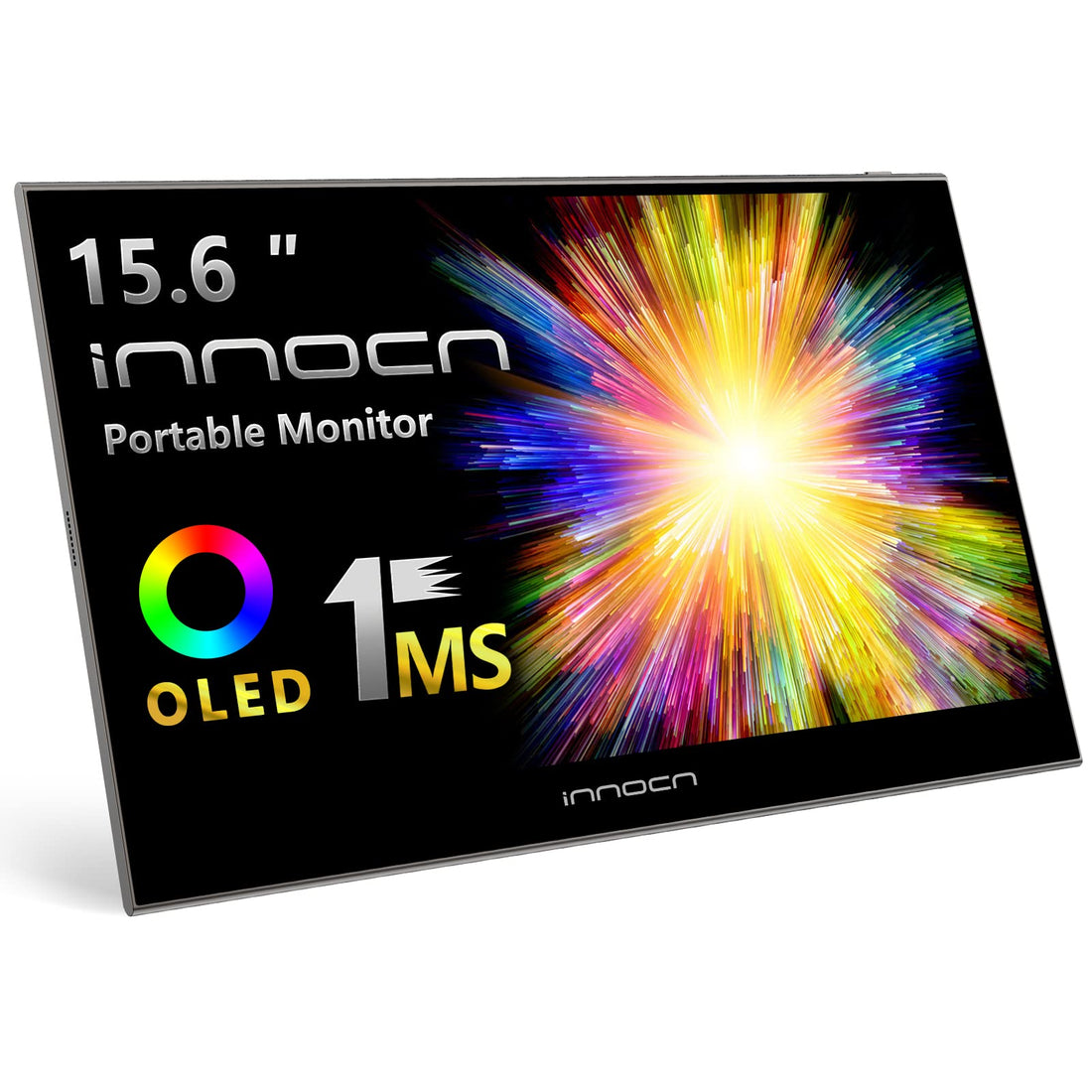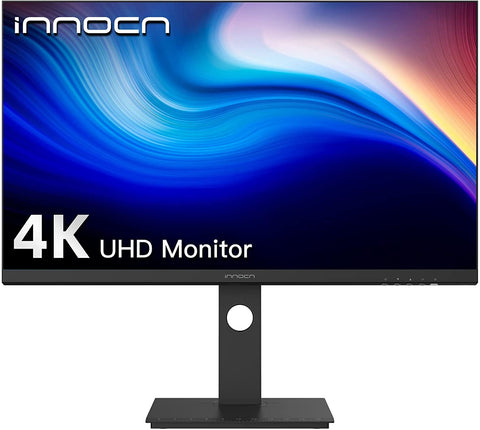Comparing 4K Monitors vs. OLED Monitors: Choosing the Perfect Display

Have you ever wondered why choosing the right monitor is a big deal?
Well, imagine this: You spend hours gazing at your screen, whether working, gaming, or binge-watching your favorite shows.
That monitor you're looking at? It's not just a window to your digital world; it's your trusty companion on your tech journey. So, picking the perfect one is crucial.
Why is it so important, you ask?
Think about it.
A good monitor can make your work more productive, your games more immersive, and your movies more cinematic.
On the other hand, the wrong monitor can leave you squinting at tiny text, missing out on all those gaming details, or watching movies that look less than stellar.
It's like having the wrong glasses prescription; things aren't crystal clear.
Now, you might have heard about 4K and OLED monitors.
In this article, we're diving headfirst into the world of monitors to help you decide between the two.
We'll break down what they are, compare their strengths and weaknesses, and ultimately guide you toward choosing the perfect display for your digital adventures.
Understanding 4K Monitors

So, what's the deal with 4K? It's not a secret code or a fancy name; it's all about the resolution.
A 4K monitor boasts a whopping 3840 x 2160 pixels. That's four times the pixels of your regular Full HD monitor, and it means more detail, sharper images, and crisper text.
But here's the twist: 4K isn't about the kind of screen (like OLED or LCD); it's all about the clarity.
Advantages and disadvantages of 4K monitorsNow, let's talk pros and cons.
The good news?
4K monitors make visuals pop. You can see tiny details in photos and videos that look like they're coming to life. But there's a catch.
To enjoy the 4K magic, you need powerful hardware. Your computer's graphics card has to flex its muscles. That can be costly.
Also, not all software and games are fully 4K-ready, so you might not get the whole experience everywhere.
Use cases and industries where 4K monitors excel.Where do 4K monitors shine?
Well, they're stars in the productivity game. Think about video editing, photo retouching, and design work; all those pixels mean you can work on intricate details.
Gamers also adore 4K for the immersive experience it brings to the table. And let's not forget content creators who need their work to shine on high-res displays.
Exploring OLED Monitors

Now, let's switch gears and dive into the dazzling world of OLED monitors.
First things first, what's up with OLED?
It stands for Organic Light-Emitting Diode, but you can forget the fancy jargon.
Here's the scoop: Every pixel on an OLED screen is like a tiny, self-contained light bulb. It can shine bright or go pitch black, all individually.
It differs from other monitors where a backlight shines through to create images. OLEDs light up themselves, and that's a game-changer.
Unique features and benefits of OLED displaysSo, what's all the fuss about OLED?
Well, it starts with those perfect blacks. There is no light leakage or grayish hues.
That means you get breathtaking contrast and jaw-dropping colors.
Imagine watching a night scene in a movie, and it feels like you're peering into the darkness.
Also, OLED has a large viewing angle and lightning-fast response times, making everything smoother than silk.
Use cases and industries where OLED monitors shineAlright, but where does OLED shine?
Picture this: you're a professional photo editor, and color accuracy is your holy grail.
Or maybe you're a cinephile who wants to see movies as the director intended.
OLED monitors are the go-to choice. They're like the fine wine of displays, perfect for tasks where every pixel matters.
And gamers?
They can't get enough of OLED's fast response times and eye-popping visuals.
Image Quality: 4K vs. OLED
Time to unleash the battle of the screens! Let's see how 4K and OLED stack up when it comes to making your visuals look drop-dead gorgeous.
Comparison of image quality, including color accuracy, contrast, and brightness
Imagine sitting in front of two monitors, one 4K and the other OLED.
What's the first thing you'd notice? The image quality, of course!
- Color accuracy: 4K monitors do a pretty good job, but OLED takes it to the next level. Colors on an OLED screen pop.
- Contrast: 4K monitors offer a decent contrast ratio, but OLED blows it out of the water. OLED can turn off individual pixels, giving you inky blacks alongside brilliantly bright whites. It's like the difference between a well-lit room and total darkness.
So, how does OLED pull off this magic trick?
It's all about those organic diodes we mentioned earlier. Each pixel can shine or turn off independently.
When a pixel is off, it's pitch-black. When it's on, it's vibrant. That's how OLED achieves those inky blacks and infinite contrast ratios. It's like the difference between night and day, literally!
Price and Affordability
Money talks, and we get it.
The price range for both 4K and OLED monitorsAlright, first things first: the price tag. 4K monitors come in a wide range of flavors, from wallet-friendly to "Whoa, that's a lot!"
Click here to browse affordable 4k monitors from our store.
The cost depends on several factors. They include screen size, panel type, and brand.
Generally, you can find 4K monitors for various budgets. On the other hand, OLED monitors tend to be on the premium side.
Browse Innocn OLED monitors for as low as $120 from our store.
Factors influencing price differencesLet's peel back the layers and find what drives these price differences.
For 4K monitors, technology plays a role. Monitors with advanced features like higher refresh rates or specialized gaming panels tend to cost more.
The brand also matters; established names often come with a premium.
For OLED monitors, it's all about that cutting-edge OLED tech. Producing those self-lit pixels isn't easy or cheap. That is why they tend to be pricier.
Conclusion
Now, let's wrap things up and help you make a decision as sharp as those high-res screens.
The key differences between 4K and OLED monitorsIn one corner, we have 4K monitors, champions of high resolution.
They're all about crispness and clarity, perfect for tasks that require detail and precision. But they depend on your computer's muscle power, and not all software and games are 4K-ready.
In the other corner, are OLED monitors, the kings of image quality.
They give you those true blacks, eye-popping colors, and infinite contrast ratios. They excel in tasks where every pixel matters, from content creation to gaming and cinematic experiences.
How to make an informed decision when choosing between the twoSo, how do you decide which one's for you?
It comes down to your needs and budget. If you're a professional or a serious gamer and you have the cash, OLED might be your holy grail.
But if you want a balance between good visuals and affordability, 4K could be the way to go.
Remember to consider the kind of tasks you'll be doing most and the hardware you have or plan to get.
At INNOCN, we stock a wide variety of 4K and OLED monitors that you can pick from. Feel free to visit our store.
